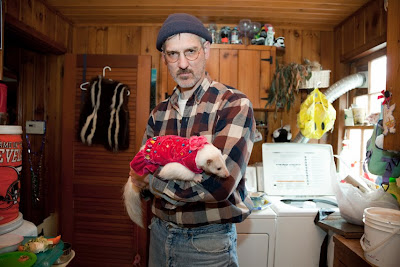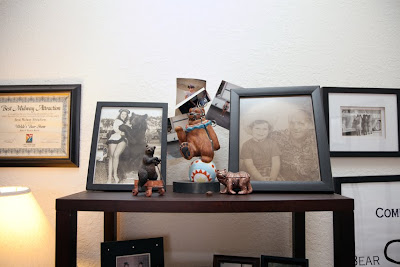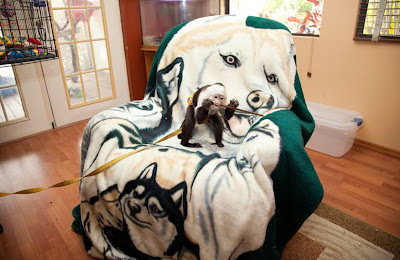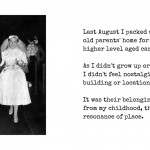Alex Arzt
Alex Arzt has a wonderful connection to the animal world, in real or faux form. Alex explores our relationships to the animal kingdom in her series, Human-Animal, and continues her animal explorations with a project about cats, Ailurophil and her series, Zoos. In addition, she has a number of interesting series about Americana.
Born in Washington DC and raised in Fredrick County, Maryland, Alex grew up with a childhood that included a reverence for the natural world and a connection to animals. After receiving her degree from the Rhode Island School of Design, she is now based in Brooklyn. She was a Critical Mass finalist in 2010 and has exhibited in a number of group exhibitions including the Griffin Museum Annual Juried Show.
Human Animal: These are photographs of real people and the animals, objects, and places that belong to them. I am fascinated by the similarities between life forms and how alike our basic drives and behaviors are. Though the basic physiologies of mammals are extremely alike from organs to skeleton (even a barnacle has a mouth, intestine, penis) there is something indefinably different about each species.
Even as I find the affinities between life forms intriguing, the boundaries between humans and other animals also interests me. I am not simply referring to the large brains that endow humans with culture, logic, self consciousness, and advanced language or our bipedal movement or opposable thumbs. To me, the indefinable difference is the mystery of animal perception that humans are only able to access through imagination and theory. In her book Adam’s Task, Vicki Hearne describes inter-species interactions as when each individual “knows for sure about the other…that each is a creature with an independent existence, an independent consciousness and thus the ability to think and take action in a way that may or may not be welcome (meaningful or creature-enhancing) to the other.” When we see another living creature, we can never truly know how they perceive us or their environment.
volution, or the transmutation of species (as Darwin calls it), has formed an infinite variety of species all ranging in different types of intelligences, instincts, physical capabilities, and defense mechanisms. Humans continually use these differences in ability to their own devices through domestication. In this project, I continually wondered how adaptable the human home is for other species, whether that species lives in its own bedroom or in a cage in the backyard. The animals in these pictures often occupy the home space as fixtures much like the trinkets and framed pictures that broadcast the animal lover’s identity.
Various objects, including empty grocery store food packets, tchotchkes, stuffed animals, animal clothes, car decals, drawings, memorialized gravesites, and photographs identify the human owners as animal-lovers, even when the object of their affection is not captured in the frame. As many of my photographs make clear, some human identities are carved through the creation of a familiar human-pet dynamic involving both affection and dominance, captivity and care. My photographs record this symbiosis as it occurs in the American home.
Posts on Lenscratch may not be reproduced without the permission of the Lenscratch staff and the photographer.
Recommended
-
Earth Month Photographers on Photographers: Tyler Green in Conversation with Megan JacobsApril 15th, 2024
-
Shari Yantra Marcacci: All My Heart is in EclipseApril 14th, 2024
-
Artists of Türkiye: Cansu YildiranMarch 29th, 2024
-
Broad Strokes III: Joan Haseltine: The Girl Who Escaped and Other StoriesMarch 9th, 2024
-
Brandon Tauszik: Fifteen VaultsMarch 3rd, 2024













































































